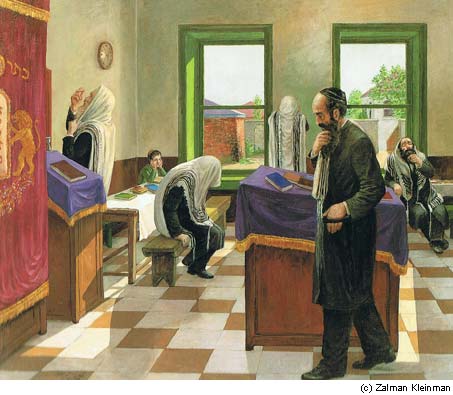Rabbi Shneur Zalman of Liadi The Alter Rebbe Parshat Ki-Teze 5565-1805 (1) first version
Indented text by the translator
Historical Traits
The six days of Emanation are termed “the order of time” because they initiated time’s subdivision into particular elements. Emanation’s first day embodies the attribute of Kindness. Consequently, each one of creation’s initial millennia manifested kindness and goodness. For a detail only expresses that which had been contained within its generality. Similarly, each succeeding 1,000 years exhibited the unique characteristic of its Emanation day-source.
Human beings enjoyed enormous life spans during the first 1,000 years after they were created, due to the influx of supernal Kindness. The second 1,000 years reflected Emanation’s attribute of Might-Severity. That’s why the Flood happened then.
During the third millennium, Emanation’s attribute of Beauty prevailed. This was the epoch when the Torah was given. Victory, manifested by Emanation’s fourth day, was expressed in the fourth millennium; both the First and Second Temples stood then. The fifth millennium characterized Emanation’s attribute of Splendor. During this period, most of the Oral Law was codified.
Our current era corresponds to the sefira of Foundation. Jews’ divine service over the eons culminated in the revelation of the Torah’s mystical traditions in relatively recent times. The Messiah will actualize the link emphasized by Foundation—the link between God and Jews—also during the sixth millennium.
Quasi Time
A minor facet of time applies even to the supernal six days of Emanation since each one is nonetheless called a day. What’s more, their very emanation took place sequentially—one of the hallmarks of time. The light of Kindness was, after all, emanated first. Afterwards, Severity’s light shone forth. Kindness, then, preceded Severity in time. And the lights of Wisdom and Understanding—exalted far above Kindness and Severity—were emanated even earlier.
This sequence, though, isn’t considered real time; it doesn’t resemble our mortal understanding of time, in which one day follows another. For the Essence of that which emanates (m’atzil) is completely abstracted above any aspect of time. Rather, God emanated what would become the order of time.
The Hebrew word for an emanation is n’atzil. The term for emanated is atzil. And that which emanates is termed m’atzil. If time is present in the world of Emanation, it must likewise be extant within the emanations’ source—the m’atzil. But such a condition can’t apply there.
References






